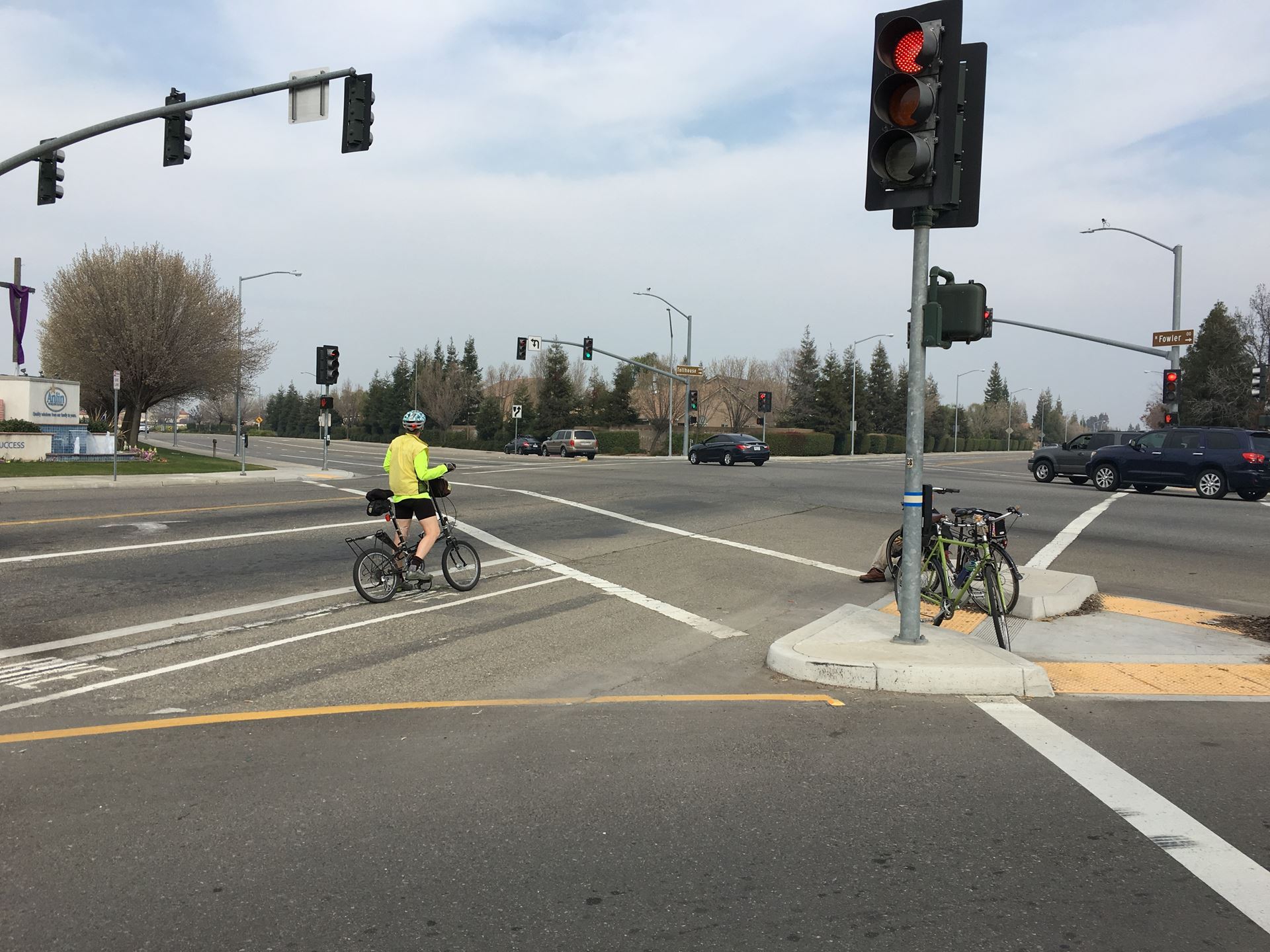Bicycle Detection at Traffic Signals

Two types of traffic signal detection
One of the annoyances often experienced by cyclists on city streets is not being detected by a traffic signal. To minimize this happening, it is helpful to know how traffic signal detection works and where in the traffic lane it’s best to place your rim to be detected. There are two main types of detection in use: inductive loops and video.
Inductive loops at traffic signals
Inductive loops consist of wires placed in the pavement and measure a change in inductance in an electrical circuit. The object changing the electrical field is generally metal: either iron, steel, or aluminum. For a bicycle, the material being detected is mostly in the wheel, not the bicycle frame. Carbon fiber wheels can be difficult to detect, as the only metal would be in the spokes.
Configurations of inductive loops
There are several different configurations of inductive loops, some are more bicycle-friendly than others. While cuts in the pavement are often visible to see where the loops are, sometimes they are sealed below a layer of pavement, which renders them invisible but helps with their long-term performance. The sealant material for the loops in the pavement deteriorates over time, and that can lead to difficulties in detecting bikes. Sometimes a bicycle symbol with two vertical lines are placed over loops. Those vertical lines indicate where to place the bike tires to be detected.
Optimal location for rim on inductive loops
What’s the key to getting a bike detected on a loop? It is to place the rim of the bike over the most sensitive area of the loop, and that will depend on the type of loop. There are four types here in Fresno County pictures below.The typical type of loop used to detect bicyclists is the Type D, or diagonal quadrupole. The loop is sensitive across the surface of the loop.
D Loop
Another type of quadrupole loop used for bicycle detection is the Type Q loop, which looks like a figure “8.” The most sensitive area for bicycle detection is along the center cut.
Q Loop
The dipole Type A loop, which looks like a square with the corners cut off and the dipole Type E loop, which is circular. The most effective way to be detected for these is to place the bike rim over the left or right sides of the loop.
A and E Loops
Lean into the loop
If your bike is not detected even though you appear to be at the optimal location, you can try leaning your bike to the side so that other components of the bike can be picked up by the loop.

Video detection at traffic signals
For video detection, different zones are programmed for the video image. Typically, there is no detection in shoulders or on the lane lines. Therefore it is important to stop in the middle of a lane a few feet back from the limit line. If you are not detected, you can try to wave your arms. At night, your bike will need a headlight to be detected—a reflector will not be adequate.
What video detection cameras look like
The image below shows two different camera types at the corner of Fowler Avenue and Tollhouse Avenue in Clovis, CA. The camera on the luminaire is for video detection. The other cameras are for monitoring the intersection in the City's Traffic Operations Center. Operators can make adjustments to the timing from the office.
The law
California Vehicle Code 21450.5, revised by legislation in 2008, requires that all new or modified actuated signals include detection at the limit line of bicycles and motorcycles.
What can FCBC do for you?
Do you know of a traffic intersection with poor bike detection? FCBC wants to hear about it!



